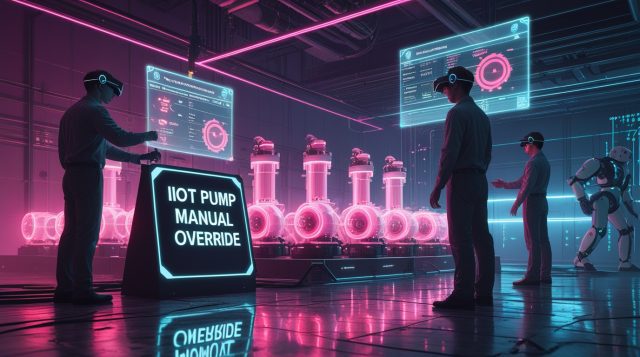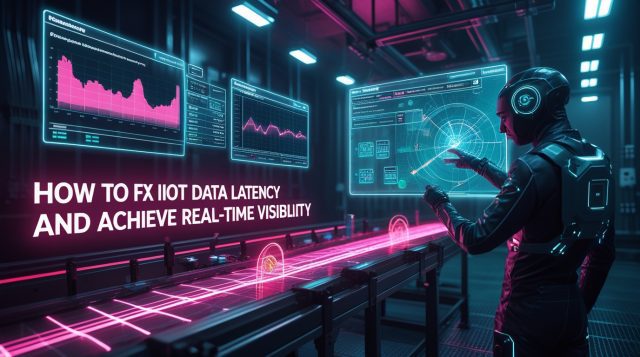Fast Facts
In late 2025, the Aisuru IoT botnet DDoS attack executed a record 15.72 Tbps strike, highlighting a systemic global cyber-hygiene failure. This isn’t just about website downtime; it’s a direct threat to industrial AI operations where DDoS protection for industrial AI and IoT device security are paramount. The convergence of vulnerable IoT devices, high-speed networks, and the botnet’s shift into botnet proxy services for AI data scraping creates a perfect storm.
The New Baseline: Understanding the 15.72 Tbps Aisuru Attack
On October 24, 2025, Microsoft’s Azure cloud platform automatically detected and neutralized a historic cyber-assault. A single customer endpoint in Australia was targeted by a UDP flood DDoS attack that peaked at 15.72 Tbps. This event, the largest DDoS attack on Microsoft Azure, underscores the importance of Azure DDoS mitigation and modern DDoS cloud security strategies.
The attack involved “extremely high-rate UDP floods” originating from over 500,000 source IP addresses across various global regions. Microsoft noted that the traffic showed minimal spoofing, a technical detail that, ironically, simplifies tracing the attack but also underscores the vast, real army of compromised devices at the botnet’s disposal.
This incident is not an isolated one. Just months earlier, the same botnet was responsible for other record-breaking attacks, including a 29.6 Tbps demonstration and a 6.3 Tbps attack on KrebsOnSecurity.com . The message is clear: the baseline for attack size is climbing rapidly. As Microsoft starkly put it, “Attackers are scaling with the internet itself”. The proliferation of fiber-to-the-home and more powerful, yet persistently insecure, IoT devices gives botnet operators unprecedented firepower.
Why Industrial AI is a Prime Target in the Botnet Era
For industrial operations leveraging AI, the stakes of such attacks transcend temporary website inaccessibility. Industrial AI systems depend on the constant flow of real-time data for predictive maintenance, supply chain optimization, and autonomous control systems. A DDoS attack that disrupts this data flow can halt production, force unplanned downtime, and corrupt the integrity of the data models themselves.
The threat is compounded by the Aisuru botnet’s recent evolution. Beyond launching headline-grabbing DDoS attacks, its operators have overhauled the malware to support a more sustainable business: renting out its network of infected devices to residential proxy services . These proxies are heavily used for large-scale, anonymized data scraping to feed AI models, creating a vicious cycle. The very infrastructure used to build AI is being weaponized to disrupt the AI operations of others.
Riley Kilmer, co-founder of Spur.us, contextualized the scale of this problem, stating, “I just checked, and in the last 90 days we’ve seen 250 million unique residential proxy IPs… That is insane. That is so high of a number, it’s unheard of. These proxies are absolutely everywhere now”. This opaque ecosystem makes it difficult to distinguish legitimate traffic from malicious botnet activity, a nightmare for security teams tasked with protecting critical industrial assets.
The systemic nature of this risk was summarized by cybersecurity analyst Sunil Varkey, who called it a “global cyber hygiene failure that is now manifesting as a strategic infrastructure risk” . When millions of poorly secured consumer devices can be coordinated into a single, short-lived digital strike, the line between consumer negligence and industrial disruption is erased.
How to Build a Resilient Defense for Critical Operations
Traditional, reactive cybersecurity measures are no longer sufficient against terabit-scale, automated attacks. Defending industrial AI operations requires a proactive, layered, and resilient strategy.
- Treat DDoS Protection as Tier-0 Infrastructure: Experts urge enterprises to move beyond treating DDoS mitigation as an afterthought. Chandrasekhar Bilugu, CTO of SureShield, advises that companies must use “multi-provider, always-on setups with capacity headroom measured in tens of terabits per second”. Assuming your cloud provider’s base-level protections are adequate is a critical mistake; they secure the platform, but you are responsible for your specific workloads and APIs.
- Embrace Continuous Testing and Validation: The digital landscape is not static. MazeBolt’s research found that, on average, 37% of an organization’s DDoS attack surface remains vulnerable even with protections in place, due to constant changes in IT systems and security policy drift. A process of continuous, non-disruptive DDoS testing is crucial to identify and remediate these hidden vulnerabilities before attackers can exploit them.
- Prepare for the Full Spectrum of Attacks: Modern IoT botnets are versatile. As Keith Prabhu, CEO of Confidis, notes, they “can now perform smarter layer-7 attacks, not just volumetric attacks”. In the first half of 2025, one mitigation provider observed that Layer 7 attacks outnumbered network-layer attacks by 7.5 times . Defenses must be calibrated to handle both volumetric floods that consume bandwidth and sophisticated application-layer attacks that mimic human behavior to exhaust server resources.
The following table breaks down the key defensive postures needed to counter modern DDoS threats.
Beyond the Immediate Attack: A Strategic Outlook
The technical challenge of mitigating a 15 Tbps attack is immense, but the broader implications are strategic. The Aisuru phenomenon reveals a fractured digital ecosystem where insecurity in consumer IoT products directly threatens the stability of industrial and economic infrastructure.
This is not a problem that can be solved by individual enterprises alone. It demands a coordinated effort across Original Equipment Manufacturers (OEMs) to build more secure devices, Internet Service Providers (ISPs) to implement better traffic filtering, and governments to enforce stricter compliance regulations . Initiatives like Cloudflare’s free DDoS Botnet Threat Feed for Service Providers are steps in the right direction, fostering collaboration to identify and dismantle botnet nodes .
For industrial leaders, the mandate is to champion resilience as a core business function. In an era where a vulnerability in a home security camera can contribute to an attack that disrupts a multinational corporation’s AI-driven supply chain, the security of the edge is inextricably linked to the security of the core.
FAQ
Why are IoT devices vulnerable to DDoS?
Weak default passwords, poor patching, and a lack of IoT device security make them easy targets.
What is the largest DDoS attack ever recorded?
The 15.72 Tbps Aisuru IoT botnet DDoS attack on Microsoft Azure in 2025.
How does a DDoS botnet work?
By hijacking insecure IoT devices, attackers coordinate them into massive floods of traffic.
Subscribe to Our Newsletter
Stay ahead of evolving cyber-physical threats. Get monthly analysis on securing industrial AI and automation, delivered by CreedTec experts directly to your inbox.
Further Reading & Related Insights
- IIoT Time Series Data Corruption from Power Instability in 2025 → Explores how unstable infrastructure corrupts industrial datasets, echoing the risks of botnet-driven disruptions.
- How to Fix IIoT Data Latency and Achieve Real-Time Visibility → Highlights latency challenges in IIoT systems, directly relevant to DDoS attacks that choke real-time data flows.
- 5 Critical Reasons IT and OT Teams Clash Over IIoT Data Ownership in 2025 → Shows organizational barriers that complicate cybersecurity and resilience planning against large-scale IoT botnet threats.
- Industrial Wi-Fi Zoning for Reliable IIoT Networks → Examines how network segmentation strengthens defenses, a key tactic against terabit-scale DDoS floods.
- Bosch Achieves Predictive Maintenance Savings with AI → Provides a case study of industrial AI success, contrasting with the vulnerabilities exposed by the Aisuru botnet.



